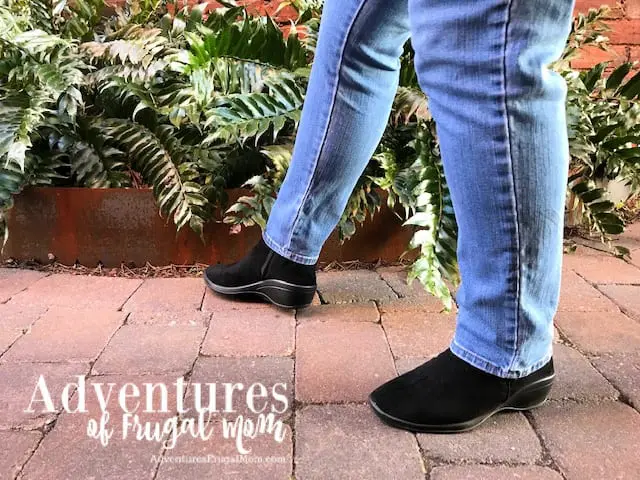How Women’s Footwear is Pivoting Towards Eco-Friendly Practices

An undeniable movement towards sustainable fashion has emerged within the industry in recent years. A more informed and environmentally aware consumer base is driving a shift towards brands that focus on positive environmental impact, with a preference for shoes for women that embrace ecological responsibility. This seismic shift in consumer preferences catalyzes industry-wide changes and heralds a new age where fashion is as concerned with its carbon footprint as aesthetics.
The repercussions of footwear manufacturing on natural ecosystems are becoming increasingly clear, prompting consumers and companies alike to reflect on how traditional production methods affect our planet. This is not merely a trend but a burgeoning collective conscience that’s motivating all stakeholders in the fashion industry to scrutinize the lifecycle of products from design to disposal and consider more sustainable practices integral to the industry’s future.
The Materials Revolution: Crafting Shoes for a Better Planet
The quest for sustainable solutions in footwear is leading to an innovative revival of materials used in shoe production. Emblematic of this change is the departure from traditional raw materials like leather and synthetics, which are notorious for their heavy environmental toll in resource depletion and pollution. Instead, there’s a growing emphasis on alternatives such as recycled plastics, organic cotton, ethically sourced wool, and even novel materials derived from agricultural waste. These sustainable substitutes reduce the industry’s carbon footprint and open new doors for creativity and diversity in design.
As highlighted in advancements in eco-friendly materials for footwear, there’s an exciting integration between sustainability and technology with developments like 3D printing. This innovative approach, which allows for customization while minimizing excess material use, demonstrates a commitment to environmental stewardship without compromising quality or design. The footprint of 3D printing in sustainable shoe manufacturing is small but growing, with the potential to significantly reduce waste and energy use, positioning it as a pioneering technique in the eco-fashion movement.
Walking the Talk: The Benefits of Sustainable Footwear
Choosing sustainable shoes extends beyond the sole purpose of reducing one’s ecological impact—there are myriad benefits layered within this decision. Environmentally speaking, producing sustainable footwear reduces greenhouse gas emissions and promotes cleaner energy use and better resource management. Harnessing renewable materials and energy, sustainable shoe brands are making strides in lessening the environmental toll of fashion.
On the societal front, ethical shoe production considers fair labor practices and the welfare of workers within the supply chain. By supporting ethical brands, consumers become part of a virtuous circle that values human rights just as much as environmental conservation. When it comes to economics, cost savings become evident over time. Superior shoes crafted from robust, environmentally friendly materials frequently have a longer lifespan than their fast-fashion equivalents, withstanding abrasion while reducing the throw-away mentality that permeates contemporary shopping.
Consumer Behavior and Sustainable Choices
A significant driving force behind the uptick in sustainable footwear is the evolution of consumer behavior. As today’s buyers become more environmentally and socially conscious, there is a corresponding demand for brands that mirror these values. Informed consumers proactively seek and support companies that produce high-quality shoes and adhere to ethical practices and environmental stewardship. With information and the power of choice, the modern consumer can significantly influence fashion, nudging it towards more sustainable horizons.
Its heightened consumer consciousness is increasingly evident in the success of brands that transparently communicate their production processes and supply chain management. Shoppers are beginning to recognize certifications for sustainable materials, with many favoring products that showcase environmental and social responsibility over mere style and convenience.
The Lifecycle of Eco-Friendly Shoes
The concept of sustainability in footwear manifests not just in the materials chosen but in the holistic process that encompasses the entire lifecycle of a pair of shoes. Forward-thinking brands are redesigning the production line to be more in tune with eco-friendly principles, considering the environmental impact at every stage, from sourcing materials and ethical manufacturing to minimalist packaging and efficient distribution networks. Moreover, the end-of-life of products is being keenly addressed, with initiatives such as refurbishment programs and recycling systems accentuating the industry’s embrace of a circular economy. The result is a range of shoes for women that resonate with the ethos of longevity and waste reduction.
The footprint of sustainable footwear also includes the empowerment of consumers to make choices that support ethical consumption and the conservation of the planet. This reflection on the entire lifecycle caters to an eco-savvy demographic willing to invest not just in a product but in the philosophy that grounds its creation and eventual recycling or composting.
Sustainable Style: Fashion-forward and Earth-Friendly
Maintaining a stylish and modern wardrobe is separate from the principles of sustainable fashion. Eco-friendly footwear offers many options that align with the latest trends while upholding high environmental standards. The emergence of shoes crafted from innovative materials amid classic designs allows for a seamless blend of style and sustainability. Consumers can now make fashion statements that are expressive and responsible, knowing that the shoes they sport are contributing to a greener world.
This growing niche of sustainable style appeals to a broad audience, from the minimalist who appreciates the understated elegance of well-made shoes to the fashionista who revels in vibrant patterns and bold textures—all without impacting the environment. Integrating sustainable footwear into your collection is a powerful self-expression, reflecting a deepening relationship with fashion and the global ecosystem.
Looking Forward: The Future of Women’s Eco-Friendly Footwear
Peering into the future, it’s clear that women’s footwear is poised for a substantial transformation. As eco-friendly practices gain ground, fueled by technology and consumer activism, we can anticipate a burgeoning array of sustainable materials and design innovations. The rise of the eco-conscious consumer and developments in manufacturing techniques suggest that the future of footwear will accommodate and celebrate sustainability principles.
The continued evolution of eco-fashion is shaped by the unwavering commitment of brands, designers, and consumers alike who are dedicated to a vision of the fashion industry that respects and preserves the environment. This shared dedication is paving the way for a vibrant, diverse, and responsible market for women’s footwear that respects the well-being of our planet while staying on the cusp of fashion trends. Indeed, shoes that tread lightly on the earth may also lead the charge in style and innovation in the not-so-distant future.
Similar Posts:
- The Iconic Brands of Luxury Fashion: A Look at Their Legacy and Influence
- From Nightgowns to Loungewear: The Evolution of Pajamas Over the Years
- 3 Reasons to Choose Cruelty-Free and Sustainable Beauty Products
- Footwear for Travelers: Tips to Keep Your Feet Comfortable
- Splurge or Save? How to Make the Right Fashion Choices









